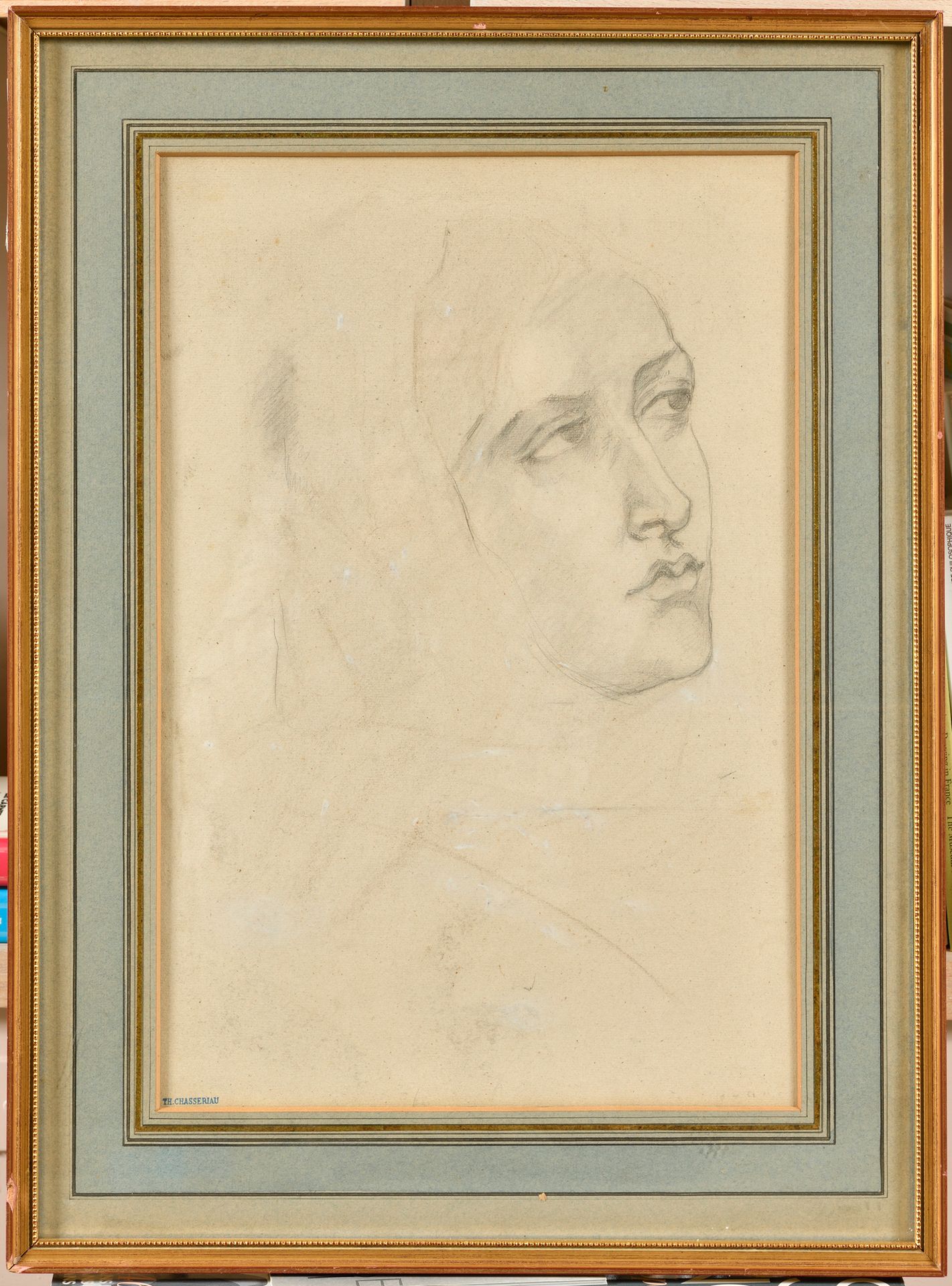Description
Théodore CHASSERIAU (1819-1856) Head of a woman in three-quarter view Graphite and white chalk 43 x 29 cm Study for the head of a Saint in the Descent from the Cross of St Philippe du Roule (1855) Provenance: Stamp of the Chassériau sale in the lower left corner (Lugt n°443). Collection of Baron Arthur Chassériau. Private collection, Paris Bibliography: Léonce Bénédite, Théodore Chassériau, sa vie et son œuvre, Paris, reproduced p.449 Marc Sandoz, Portraits et visages dessinés par T.Chassériau, Editart - Les Quatre Chemins, Paris, 1986, vol II, n°187, ill p.184 Expert: Cabinet de Bayser
107
Théodore CHASSERIAU (1819-1856) Head of a woman in three-quarter view Graphite and white chalk 43 x 29 cm Study for the head of a Saint in the Descent from the Cross of St Philippe du Roule (1855) Provenance: Stamp of the Chassériau sale in the lower left corner (Lugt n°443). Collection of Baron Arthur Chassériau. Private collection, Paris Bibliography: Léonce Bénédite, Théodore Chassériau, sa vie et son œuvre, Paris, reproduced p.449 Marc Sandoz, Portraits et visages dessinés par T.Chassériau, Editart - Les Quatre Chemins, Paris, 1986, vol II, n°187, ill p.184 Expert: Cabinet de Bayser
You may also like
